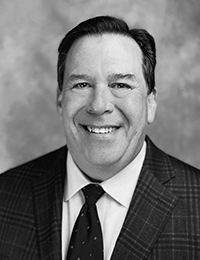
Financial Care for Life > IRA Income Distribution
IRA Income Distribution
Understanding Traditional IRA Distributions
Unfortunately, many people withdraw money from their traditional Individual Retirement Accounts (IRA) without fully understanding the consequences of their distribution. Below, we have provided several important items to know that will help you avoid any IRA distribution pitfalls.
Tools that may help you:
Knowing When You Can and Can’t Begin Making IRA Withdrawals
As implied by its name, a traditional IRA (Individual Retirement Account) is to be used during retirement. Once you turn 59.5 years old, you can begin penalty-free withdrawals.
Understanding Penalties and Exceptions
It is possible to withdraw funds if you’re working or retired. However, regardless of your age or if you’re working or not, the money withdrawn will be taxed as ordinary income. Additionally, you may be assessed with an additional 10% early withdrawal penalty if you’re not yet 59.5 years old at the time you draw out of your IRA.
The IRS does offer some exceptions to the early withdrawal penalty. If you’re a qualified first-time homebuyer (with withdrawals not exceeding $10,000) or if you need to pay medical insurance premiums while unemployed, the IRS may alleviate the 10% early withdrawal penalty. A few other exceptions are also available including payment for qualified higher education expenses and distributions for military reservists who have been called into active duty.
Determining Your Timeline and Potential Tax Implications
There are set timelines and potential tax implications established for your required distributions. You’re required by the IRS to withdraw money annually no later than December 31st beginning the calendar year following your 72nd birthday. As a result, if you reach the age of 72 on June 30, 2022 and choose to defer your initial withdrawal until April 1, 2023, you’ll be required to take a second distribution later that year and both withdrawals will be taxed on your 2024 returns. To avoid this, a better option is to take the initial withdrawal in the same calendar year you turn 73.
Meeting the Annual Required Withdrawal Amount
For each year after your required beginning date, you must withdraw a certain amount of your IRA each and every year. Also known as the required minimum distribution (RMD), the IRS provides a worksheet on its website to help you determine this minimum amount. You can always take more than the RMD but if you don’t meet or skip it, you’re subject to a 50% excise tax on the amount you neglected to withdraw.
We understand that managing your IRA distributions and withdrawals can be complex. That’s where we can help. The KIG advisor team will walk you through the details and ensure you’re getting the most out of your retirement.
The information presented here is not specific to any individual's personal circumstances.
To the extent that this material concerns tax matters, it is not intended or written to be used, and cannot be used, by a taxpayer for the purpose of avoiding penalties that may be imposed by law. Each taxpayer should seek independent advice from a tax professional based on his or her individual circumstances.
These materials are provided for general information and educational purposes based upon publicly available information from sources believed to be reliable — we cannot assure the accuracy or completeness of these materials. The information in these materials may change at any time and without notice.





 Maggie Slivinski
Maggie Slivinski Steve Corbo
Steve Corbo Alexandra Rao
Alexandra Rao Alexa Comey
Alexa Comey Gene Donato
Gene Donato Jack W. Kennedy III, CFP®, AAMS®
Jack W. Kennedy III, CFP®, AAMS® Henry (Hank) J. Schroeder, CFP®
Henry (Hank) J. Schroeder, CFP® Diane Gallagher
Diane Gallagher Scott Bernstiel
Scott Bernstiel Chrissy Carpenter
Chrissy Carpenter David Strout
David Strout Keith R. Hering AAMS®, CRPS®, CIMA®
Keith R. Hering AAMS®, CRPS®, CIMA®  Marjorie Onuwa
Marjorie Onuwa